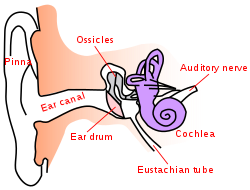 Discovery points to a common cause for multifaceted disease By Elaine Schmidt May 25, 2011
Discovery points to a common cause for multifaceted disease By Elaine Schmidt May 25, 2011For decades, autism researchers have faced a baffling riddle: how to unravel a disorder that leaves no known physical trace as it develops in the brain.
Now a UCLA study is the first to reveal how the disorder makes its mark at the molecular level, resulting in an autistic brain that differs dramatically in structure from a healthy one. Published May 25 in the advance online edition of Nature, the findings provide new insight into how genes and proteins go awry in autism to alter the mind.
The discovery also identifies a new line of attack for researchers, who currently face a vast array of potential fronts for tackling the neurological disease and identifying its diverse causes.
"If you randomly pick 20 people with autism, the cause of each person's disease will be unique," said principal investigator Dr. Daniel Geschwind, the Gordon and Virginia MacDonald Distinguished Chair in Human Genetics and a professor of neurology and psychiatry at the David Geffen School of Medicine at UCLA. "Yet when we examined how genes and proteins interact in autistic people's brains, we saw well-defined shared patterns. This common thread could hold the key to pinpointing the disorder's origins."
The research team, led by Geschwind, included scientists from the University of Toronto and King's College London. They compared brain tissue samples obtained after death from 19 autism patients and 17 healthy volunteers. After profiling three brain areas previously linked to autism, the group zeroed in on the cerebral cortex, the most evolved part of the human brain.
The researchers focused on gene expression — how a gene's DNA sequence is copied into RNA, which directs the synthesis of cellular molecules called proteins. Each protein is assigned a specific task by the gene to perform in the cell.
By measuring gene-expression levels in the cerebral cortex, the team uncovered consistent differences in how genes in autistic and healthy brains encode information.
"We were surprised to see similar gene expression patterns in most of the autistic brains we studied," said first author Irina Voineagu, a UCLA postdoctoral fellow in neurology. "From a molecular perspective, half of these brains shared a common genetic signature. Given autism's numerous causes, this was an unexpected and exciting finding."
The researchers' next step was to identify the common patterns. To do this, they looked at the cerebral cortex's frontal lobe, which plays a role in judgment, creativity, emotions and speech, and at its temporal lobes, which regulate hearing, language and the processing and interpreting of sounds.
When the scientists compared the frontal and temporal lobes in the healthy brains, they saw that more than 500 genes were expressed at different levels in the two regions.
In the autistic brains, these differences were virtually non-existent.
"In a healthy brain, hundreds of genes behave differently from region to region, and the frontal and temporal lobes are easy to tell apart," Geschwind said. "We didn't see this in the autistic brain. Instead, the frontal lobe closely resembles the temporal lobe. Most of the features that normally distinguish the two regions had disappeared."
Two other clear-cut patterns emerged when the scientists compared the autistic and healthy brains. First, the autistic brain showed a drop in the levels of genes responsible for neuron function and communication. Second, the autistic brain displayed a jump in the levels of genes involved in immune function and inflammatory response.
"Several of the genes that cropped up in these shared patterns were previously linked to autism," said Geschwind. "By demonstrating that this pathology is passed from the genes to the RNA to the cellular proteins, we provide evidence that the common molecular changes in neuron function and communication are a cause, not an effect, of the disease."
The next step will be for the research team to expand its search for the genetic and related causes of autism to other regions of the brain.
Autism is a complex brain disorder that strikes in early childhood. The disease disrupts a child's ability to communicate and develop social relationships and is often accompanied by acute behavioral challenges. In the United States, autism spectrum disorders are diagnosed in one in 110 children — and one in 70 boys. Diagnoses have expanded tenfold in the last decade.
The study was funded by the National Institute of Mental Health, the Canadian Institutes of Health Research, and Genome Canada. Tissue samples were provided by the Autism Tissue Project, the Harvard Brain Bank and the Medical Research Council's London Brain Bank for Neurodegenerative Disease.
Geschwind's and Voineagu's co-authors included Jennifer Lowe, Yuan Tian, Steve Horvath, Jonathan Mill, Rita Cantor and Benjamin Blencowe of UCLA; Xinchen Wang of the University of Toronto; and Patrick Johnston of King's College London.
 Regarding ear equalization with in a Hyperbaric Oxygen Chamber
Regarding ear equalization with in a Hyperbaric Oxygen Chamber













